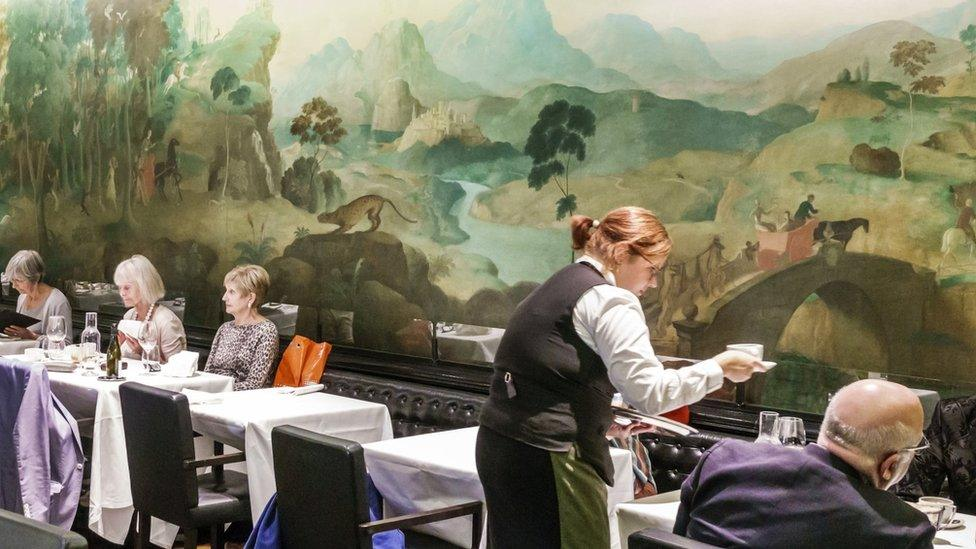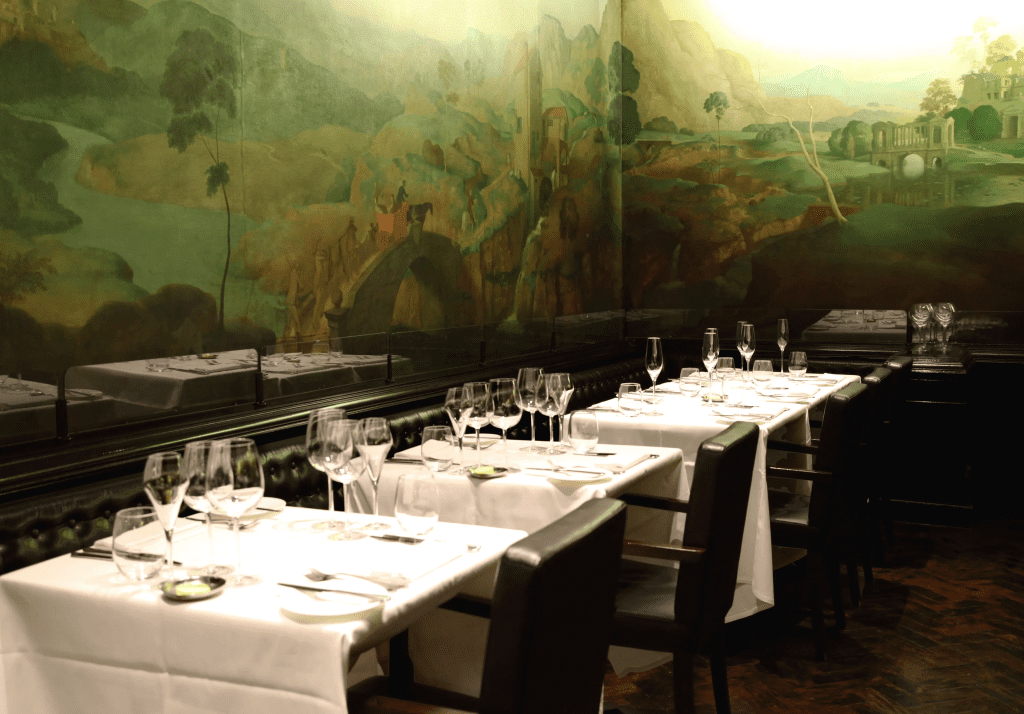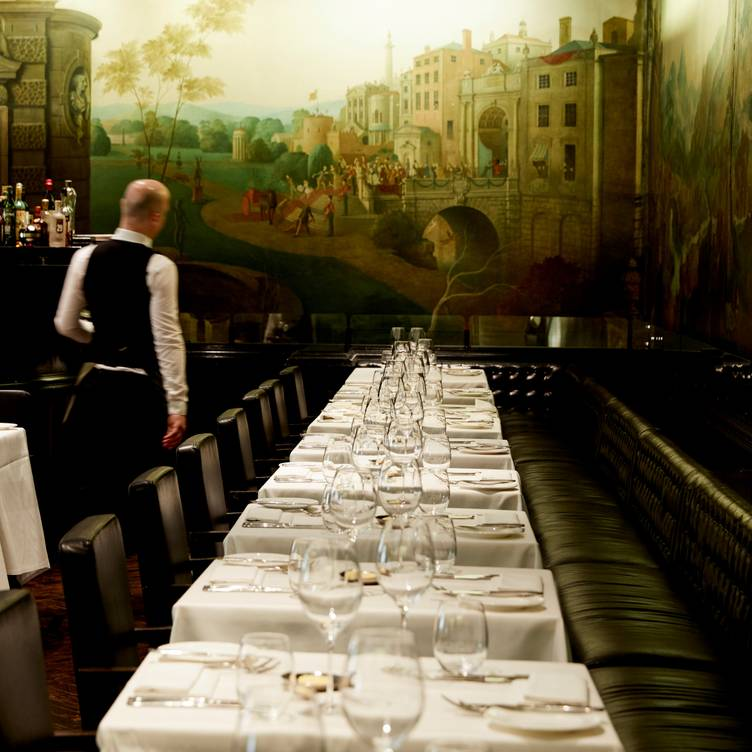A nearly century-old mural celebrated for its artistic merit yet condemned for its offensive imagery has led to the closure of a prestigious British restaurant. The artwork, painted by Rex Whistler in 1927, has sparked intense debate about the intersection of history, art, and morality in modern cultural institutions. Its divisive content, depicting enslaved Black children and caricatured Chinese figures, forced Tate Britain to make a controversial decision, highlighting society’s ongoing struggle with its colonial past.
The Mural’s Historical and Artistic Significance

Titled “The Expedition in Pursuit of Rare Meats,” the mural was commissioned when artist Rex Whistler was just 23 years old. Spanning the walls of Tate Britain’s grand dining room, it narrates a fictional journey of explorers seeking rare delicacies. Known for its intricate detail and whimsical narrative, the mural was initially celebrated as a masterpiece of its time.
However, embedded within its elaborate storytelling are depictions that reflect deeply ingrained racist stereotypes. These include enslaved Black children in chains and exaggerated caricatures of Chinese figures, imagery that perpetuates the dehumanization of marginalized groups. While its artistic value remains undeniable, the mural’s content has come under scrutiny in recent years.
A Restored Legacy Tarnished by Racism
In 2013, the mural underwent a full restoration, intended to preserve its artistic significance for future generations. At the time, the problematic depictions were acknowledged but largely dismissed as products of a bygone era. Fast forward to the present day, and shifting cultural perspectives have cast a critical eye on the mural’s offensive content.
Critics argue that its presence in a restaurant setting is especially tone-deaf, creating an environment where diners, often from privileged backgrounds, are surrounded by imagery of oppression. This stark incongruity has fueled calls for its removal or recontextualization.
The Role of Tate Britain’s Ethics Committee
The controversy reached its peak in 2021 when Tate Britain’s ethics committee, chaired by Moya Greene, reviewed the mural. After careful deliberation, the committee deemed the imagery “unequivocally offensive.” Greene emphasized that the mural should neither be altered nor removed but acknowledged that its use as a backdrop for dining compounded its offensiveness.
Her statement underlined the ethical dilemma facing cultural institutions: how to preserve historical art while addressing its harmful impact. The decision to close the Rex Whistler restaurant followed this acknowledgment, a move further influenced by reduced visitor numbers during the COVID-19 pandemic.
Closure of the Rex Whistler Restaurant
The closure of the restaurant marked a turning point in the debate over the mural. The dining room, once synonymous with luxury and fine dining, became a focal point of public backlash. Prominent voices, including British politician Diane Abbott, condemned the restaurant’s location within such a controversial setting.
Abbott shared her shock upon learning about the mural’s imagery, stating, “I had no idea the famous mural had repellent images of Black slaves. Museum management needs to move the restaurant.” Activists echoed her sentiments, describing the juxtaposition of fine dining and oppressive imagery as grotesque.
Public Outcry and Activism

The mural’s controversial content has ignited widespread debate and activism. Critics have launched petitions calling for its removal or reinterpretation, emphasizing the harm caused by its continued display. One petition described the experience as “resembling a horror film more than an exclusive dining experience,” highlighting the absurdity of such imagery in a modern cultural institution.
Conversely, some argue that the mural should remain as a historical artifact, serving as a reminder of Britain’s colonial past. They believe that erasing offensive art risks sanitizing history and eliminating opportunities for education.
Tate Britain’s Commitment to Accountability
Tate Britain has acknowledged the controversy and pledged to address the mural’s presence responsibly. In a statement, the institution expressed its commitment to transparency and inclusivity, aligning with broader efforts such as London’s public realm review and the establishment of a race equality taskforce.
“Tate has been open and transparent about the deeply problematic racist imagery in the Rex Whistler mural,” the statement read. “We are actively discussing how best to address the mural and will keep the public updated over the coming months.”
The Bigger Picture: Art, History, and Modern Morality

The closure of the Rex Whistler restaurant highlights a broader societal reckoning over how to handle historical art that reflects outdated or offensive ideologies. The debate centers on three key approaches:
1. Preservation vs. Erasure
Some argue that removing or altering offensive historical art risks erasing history, preventing future generations from confronting the prejudices of the past. Proponents of preservation believe that such works should remain intact to provoke dialogue and reflection.
2. Contextualization as a Solution
Many suggest reframing controversial art by adding plaques, digital guides, or exhibitions that provide historical context. This approach aims to acknowledge the harm caused by the imagery while educating viewers about the societal values that shaped it.
3. Repurposing Spaces
Another proposed solution is to repurpose spaces like the Rex Whistler restaurant. Moving the dining area to another location and transforming the mural room into an educational exhibit could strike a balance between preservation and accountability.
The Future of the Rex Whistler Mural
As the debate continues, the fate of the mural remains uncertain. The restaurant’s closure is a significant step, but it leaves unanswered questions about how cultural institutions like Tate Britain can navigate the complexities of historical art in a modern, inclusive society.
For many, the controversy surrounding the mural is emblematic of a larger cultural shift—one that challenges us to confront the uncomfortable truths of our history while striving for a more equitable future.
Conclusion
Rex Whistler’s mural, painted nearly a century ago, has become a flashpoint for discussions about art, history, and morality. Its offensive imagery, while reflective of its time, has no place in a setting meant for celebration and leisure. The closure of the Rex Whistler restaurant is a necessary step in addressing the harm caused by such depictions, but it is only the beginning of a larger conversation.
As society continues to grapple with these issues, the mural serves as a reminder of the power of art to spark dialogue, provoke thought, and challenge us to reckon with our past. The key lies in finding ways to honor history without perpetuating the injustices it reflects. Only then can we create spaces that truly embody the values of diversity, equity, and inclusion.


